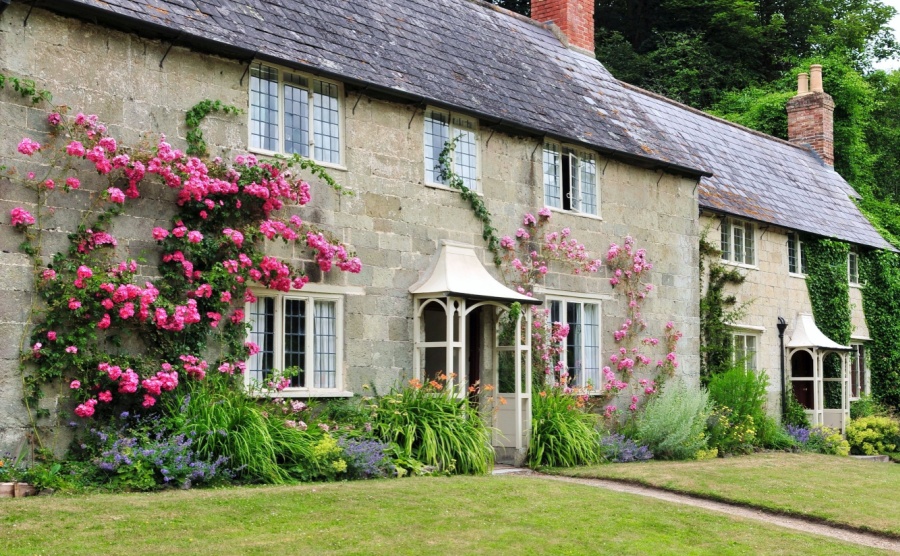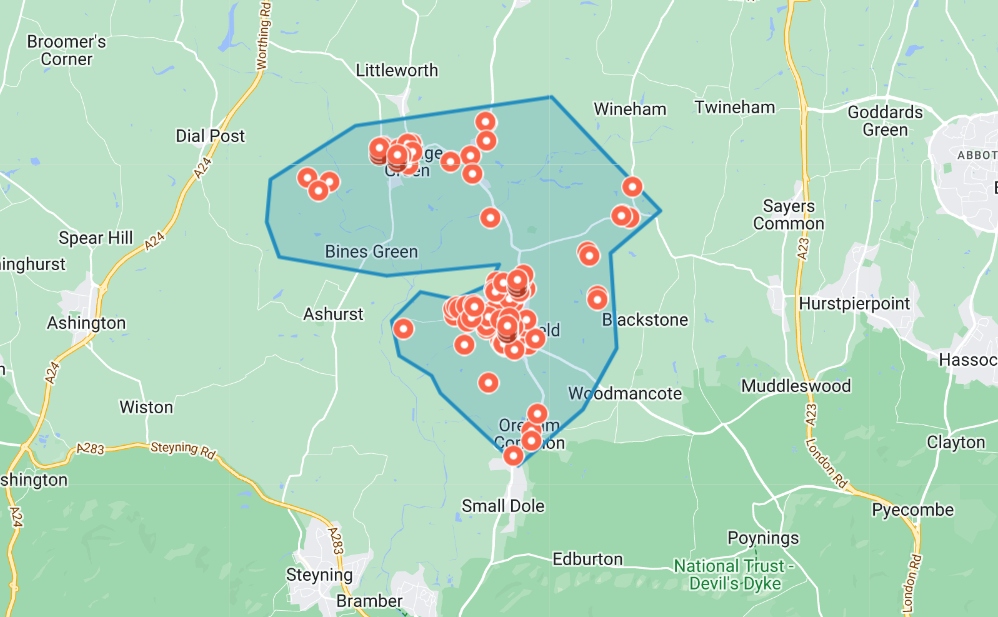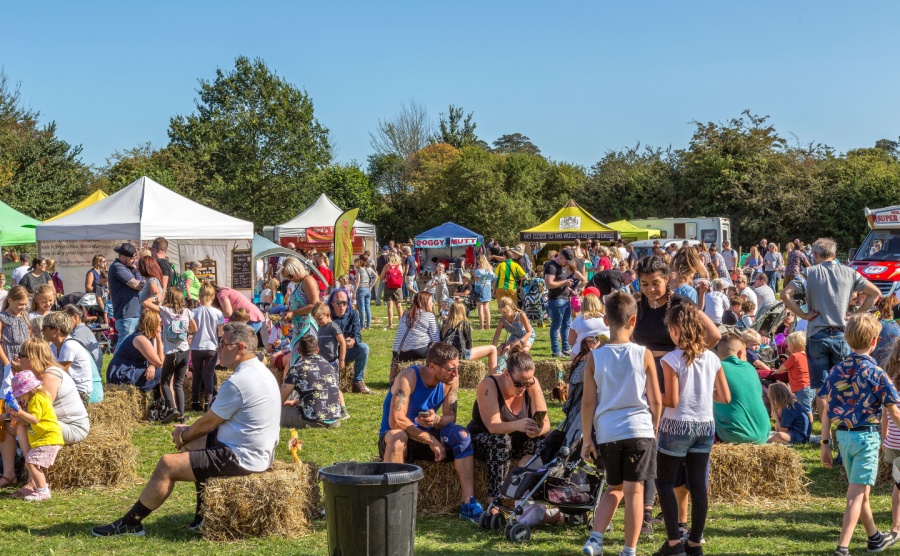If you dream of moving to a British village, what are the practicalities? Covering everything from house prices to services to making friends, we’re heading to the countryside…
From literature and TV, from Lark Rise to Candleford to Midsomer Murders (shown in 200 countries!) the British village has been a source of inspiration to writers, artists and dramatists for centuries.
Indeed, maybe the best way that anyone can learn about life in a British village is simply to tune every evening at 7pm to The Archers on BBC Radio 4. It may be an idealised (and dramatic) version of village life in England, but it is both popular and honest.

The Cotswolds village of Snowhill, Gloucestershire
But what is a village exactly? What should you consider when choosing one and what are the financial and social implications of moving to one of the UK’s 6,116 villages?
What is a village?
The designation of a British village used to be a community with a church. A hamlet would be a smaller village that doesn’t have a church. It can also be defined as a centre of population of less than a square mile (2.5km2).
Typically, a village will have at least one pub and village shop too. It may have a village hall and a parish council, and a fifth of villages have their own school. They are unlikely to have a regular market or a mayor or town hall.
There is no official maximum size for a village, and some small towns keep the village name as they have grown, simply because they think it sounds nicer! That even goes for villages within cities, such as Wimbledon Village. However, the Parliament website sets the dividing line at 7,500 people and lists 6,116 of them in the UK.
Unlike France, with its excellent system of Mairie, you might struggle to know who to contact about each service. While the part-time and voluntary Parish council will have a say in, for example, planning issues, the District Council will be your first port of call if you need help with rubbish collection, schools, other services or wish to make a change to your property. Even so, do visit your local Parish Council to ask for advice.
Property prices in British villages
What will you pay for a village home? A lot of that depends where you choose.
Unlike many countries, village property in the UK is not generally cheaper than urban homes. Indeed analysis of Land Registry data found that rural property was 18% more expensive then urban, averaging £347,000 for a rural property and £295,000 for urban. Of course, that’s partly down to country homes being bigger and with gardens. But even comparing like for like, anyone who has tried to buy a flat in a pleasant village setting will find they are in huge demand – by younger workers and first-time buyers as well as older people downsizing from the family home.
That also makes village flats excellent buy-to-let options. However, investors should be careful of new rules from April 2025, as some local authorities are seeking to discourage buy-to-let in popular areas by doubling local property taxes (“Council tax”) on second homes. Average Council Tax in the UK is around £2,000 per year.

A village home
The gap between rural and urban prices gets even bigger in the southeast where in 2023 the average rural property cost £705,500 compared to £445,500 for an urban one.
It is growing larger too. Data from the mortgage lender Nationwide found that a semi-detached house in a mainly rural area rose in price by 22% in the past five years compared to 17% in mainly urban areas. For all property, over ten years the average village, hamlet or isolated home has risen by between 46% in the northeast of England and 65% in the southwest.
That is partly the pandemic effect. Being able to work from home – maybe commuting to the city one or two days a week, if at all, has enabled city workers to leave the suburbs and get that lovely village setting.
Finding a home in a British village
It’s easy to find rural properties on sale in the UK exactly where you want via Rightmove’s excellent website. You simply draw a map around the villages you’re interested in and extend it to as many villages as you like. For example:

Simply draw a map of the villages you want on Rightmove
Then you contact the estate agent directly to view their listing. Estate agent fees are far lower in the UK than many countries, and only paid by the seller. But that does mean that the agent will show you round the property and offer some advice on the locality, but that’s basically it. They may not be a fount of knowledge on local schools or bus services.
Will you need a car?
While buses have made a big come-back in the cities, rural communities frequently complain that they have continued to be cut in country areas.
There is good news, however. As part of its ‘Net Zero’ green strategy the government is putting billions of pounds into new services including a price cap of £2 per bus journey. People with a bus pass (retirement age) can get free transport at off-peak times.
Any village of over a thousand people or so should have basic bus services. Moreover It’s easy to check public transport services online, via Google, sites like traveline.info or via local authority sites
However, village bus services do stop early in the evening. Hence villages with train services are particularly popular as these continue later into the evening and early morning. Property prices will almost certainly be a little higher in such villages, especially if they are “commutable” to a large city. Villages in the ‘Home Counties’ – those around London – with train services will be super-popular.
Villages within the UK’s 14 national parks tend to be better for public transport as they get extra subsidises.
For hamlets and areas with no services you may need to get creative with a mix of taxi, electric bicycle and ‘Shanks’s pony’ (walking). Electric bikes certainly make rural travel easier, although the UK’s narrow country roads can take some getting used to (even for those in a car).
Largely it comes down to individual councils, so do plenty of research if you are relying on public transport.
Bringing the family to a village
If you are bringing children to the UK, their wellbeing, education and mental health will be paramount. Local British children in villages usually seem to complain about being bored and that is likely only to be worse for a newcomer with a different language. It’s why ethnic diversity tends to be less in rural areas.
However, there are ways to make bringing your children to a village more successful.
Firstly, schooling. Quite simply, move to a village with a school. According to the government about a fifth of villages have a school and the average number of pupils is just over 100. Over 90% of these schools are rated by education authorities as “good” or “outstanding”. These will act as a hub for smaller hamlets and villages nearby. Living within walking distance of the school is the best guarantee of your kids settling in well.
Secondly, join them up to things. Popular rural activities and groups include the Young Farmers’ Clubs. You don’t have to be a farmer! They have 25,000 members aged from 10 upwards and doing all sorts of activities. Most villages will also have sports teams, especially the cricket team, often the hub of village life. There are particular rural activities that kids love, such as horse-riding or kayaking, and the Scouts and Guides, which go from four years (“squirrels”) to 18 is a great way to make friends. Bear in mind that very few British-born kids speak another language even basically, so yours will need to learn English!
Health services in British villages
Local health and social services are certainly under pressure at the moment, possibly in the villages and rural communities even more than the towns and cities. A village of under 2,000 people or so is unlikely to have a GP surgery or a dentist, so a trip to the nearest town will be required.
For the immobile that can be a problem, but many villages have voluntary groups where someone will drive you to an appointment.
For social services help, for example help in the home, there should not be too much difference between town and village as carers all drive to appointments anyway. Speak to the social services department in the area where you are thinking of moving, perhaps if you are moving back to the UK from abroad.
Making friends in a British village
Congratulations! Now all the hard work is done, and you have moved in, all that remains is to meet your fellow villagers. It seems fair to say that some parts of the country are more outgoing and welcoming than others. Stroll around a Scottish Borders village on a sunny Sunday afternoon and you’ll soon be chatting away – possibly less so in Surrey’s commuter belt.

A village fete (SMC Photo / Shutterstock.com)
The hubs of a village remain, as ever, church, pub, school, farming community and sports, although not necessarily in that order.
One of the joys of village life is that entertainment can be inexpensive – attending church, joining a local cricket team, joining a rambling group or gardening club – and there will be social activities around these. These are where people will be most pleased to see you and most welcoming, even in commuter belt! People from overseas should feel confident that they will get a warm welcome, even if seen as something of a curiosity at first.
Life in a British village may not quite be the arcadia of popular culture, and there are plenty of “I moved from London to the country, and now can’t wait to move back!” types of articles in the newspapers. But you will probably love it. Just listen into The Archers and start planning your move!










